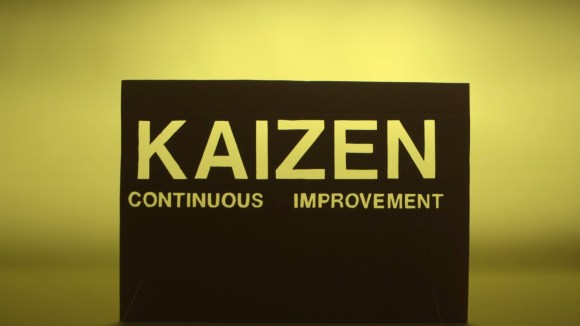
Over a year and a half after Hurricane Sandy ravaged New England, some people are still without permanent housing. The poorest populations in New York have been impacted the most, dependent on aid long after the rest of the city moved on. Several major companies got together to assist in the effort for aid, but Toyota had a novel contribution: efficiency.
Toyota sent experts to New York for eight weeks to help Food Bank of New York’s partner organization, Metro World Child, improve their methods, thereby helping to get food donations to as many people as possible using as few labor hours as possible. The improvements meant that the same resources were used to provide food to more families faster.
Consultants Jami and Lisa visited Metro World Child (among other non-profits across the US) to teach principals developed at Toyota to improve efficiency. Toyota Production System (TPS) is based on the idea that “the summation of many, many, small, simple, cheap improvements can have a very big impact.” It is related to the concept of “kaizen,” or “continuous improvement.”
After observing the charity’s usual method of operation, they had some advice that completely changed the experiences of the volunteers and the communities they serve. The consultants’ first step was to “eliminate waste.” The charity packs boxes of food designed to provide three days’ worth of balanced meals for the average-sized family. Lisa explains, “What about a different box size? So that we’re not shipping so much air.”
It sounds like a minor issue: air doesn’t add any weight, so why does it matter? Jami continues, “If we could go to a smaller box, we would have the benefit of being able to put more meals on the truck to serve more people.” With the larger boxes, they were able to ship 864 boxes per shipment, but after changing to the smaller boxes, they could fit 1,260 per shipment—nearly a 50% increase!
George, who is in charge of Metro Food Distribution, explains it perfectly: “When we’re down to our last box, and you have like seven families standing on the line, and you just have that one box, and you don’t know what exactly to do, that kills me.” Thanks to the new boxes, George isn’t as likely to have that dilemma.
Their next step was to “create continuous flow.” They noticed that the volunteers had a difficult time packing boxes. Each volunteer was responsible for packing one box at a time with approximately 25 pounds of food. They walked from pallet to pallet in a crowded room, sometimes struggling to open wrapping or balance heavy boxes. It took an average of about three minutes to pack a single box.
▼ That’s a lot of walking around!
▼ And a lot of things that are awkward to carry!
By rearranging the room, they cut down on the distance the volunteers traveled, the energy they spent packing—and most importantly, the time it took to pack each box. Jami explains that “by putting everybody on one side of the line and having the material come from the opposite, we think we’re going to get a smoother flow.” After the adjustments to the process, they were packing each box in about 11 seconds.
▼ It even looks a lot more manageable for the volunteers.
▼ By utilizing a roller line, they hardly have to lift boxes at all.
They also brought some of these improvements to the distribution points. It allowed them to get the donations off the truck and to the people much more easily and quickly. Where it once took about three hours to hand out food at one site, it now took only 1.2 hours. That means shorter waits for the recipients, who could get back to their lives that much sooner.
▼ With this many people to serve, no one wants to drag their feet.
▼ Many people likely walked to the distribution site.
▼ The roller line makes it possible to line the boxes up—no waiting to pass them down!
▼ That makes George a happy man!
As a result, they are serving about 400 more families than they were, but in only half the time.
▼ In other words, they have become ninjas of giving.
For the whole uplifting story, watch “Meals Per Hour” on YouTube.
While donations are crucial for charities like Metro World Child, improvements to efficiency mean those donations can go much, much further. When you think about all the non-profits serving people all over the world, such a simple change in approach has the power to do a huge amount of good. Here’s to companies like Toyota for sharing their intellectual as well as material resources!

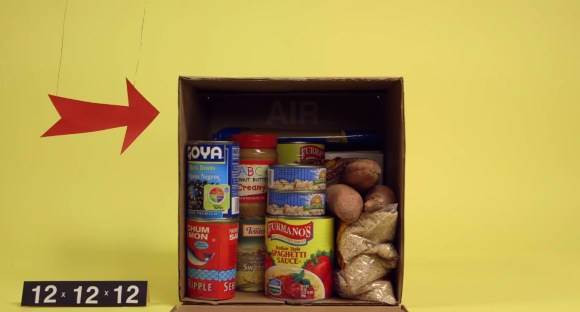

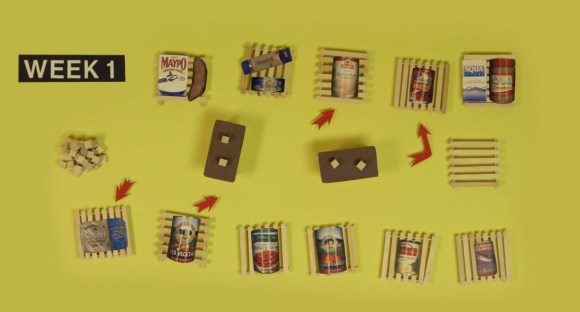
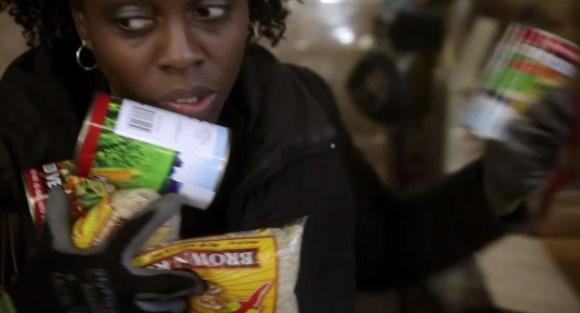

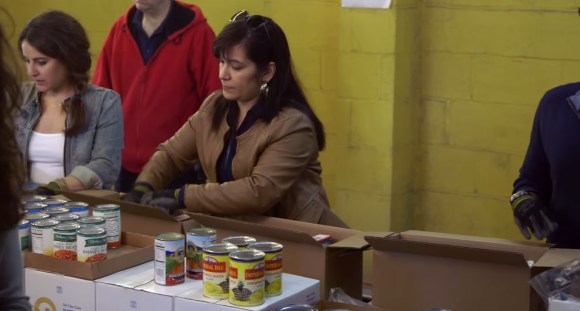
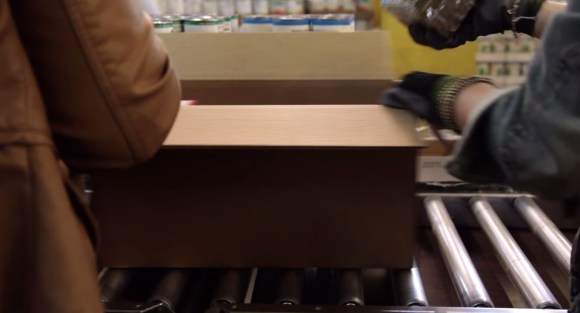
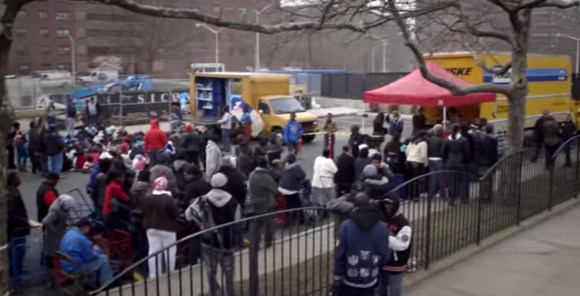
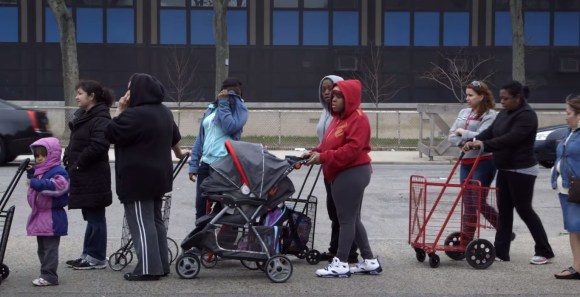
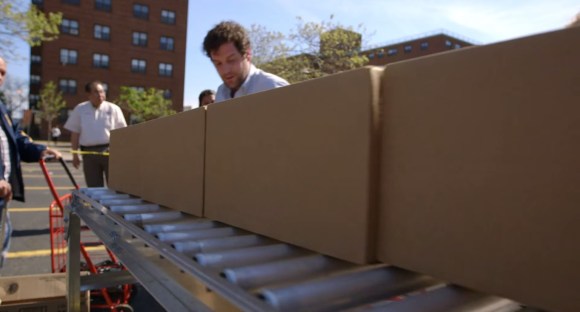


 Starbucks Japan ready to get Year of the Horse started with adorable drinkware and plushies【Pics】
Starbucks Japan ready to get Year of the Horse started with adorable drinkware and plushies【Pics】 7 great places to see Mt. Fuji from without having to climb it
7 great places to see Mt. Fuji from without having to climb it These beautiful Studio Ghibli 10,000-year calendar figures are actually good forever【Photos】
These beautiful Studio Ghibli 10,000-year calendar figures are actually good forever【Photos】 New Japanese menstrual product seeks to help women spot unidentified iron deficiencies
New Japanese menstrual product seeks to help women spot unidentified iron deficiencies Japan’s otoshidama tradition of giving kids money at New Year’s gets a social welfare upgrade
Japan’s otoshidama tradition of giving kids money at New Year’s gets a social welfare upgrade Starbucks Japan ready to get Year of the Horse started with adorable drinkware and plushies【Pics】
Starbucks Japan ready to get Year of the Horse started with adorable drinkware and plushies【Pics】 7 great places to see Mt. Fuji from without having to climb it
7 great places to see Mt. Fuji from without having to climb it These beautiful Studio Ghibli 10,000-year calendar figures are actually good forever【Photos】
These beautiful Studio Ghibli 10,000-year calendar figures are actually good forever【Photos】 New Japanese menstrual product seeks to help women spot unidentified iron deficiencies
New Japanese menstrual product seeks to help women spot unidentified iron deficiencies Japan’s otoshidama tradition of giving kids money at New Year’s gets a social welfare upgrade
Japan’s otoshidama tradition of giving kids money at New Year’s gets a social welfare upgrade Who actually writes Japan’s Letters from Little Sister and schoolgirl love letter capsule toys?
Who actually writes Japan’s Letters from Little Sister and schoolgirl love letter capsule toys? Starbucks teams up with 166-year-old Kyoto doll maker for Year of the Horse decorations【Photos】
Starbucks teams up with 166-year-old Kyoto doll maker for Year of the Horse decorations【Photos】 Japan’s letter-from-little-sister capsule toys become even more disturbing with new content
Japan’s letter-from-little-sister capsule toys become even more disturbing with new content We found possibly the quietest Japanese-style hotel in Tokyo’s bustling Shinjuku district
We found possibly the quietest Japanese-style hotel in Tokyo’s bustling Shinjuku district 7-Eleven Japan’s ramen-cooking robot whipped us up a bowl of noodles【Taste test】
7-Eleven Japan’s ramen-cooking robot whipped us up a bowl of noodles【Taste test】 Disillusionment at Tsukiji’s tourist-target prices led us to a great ramen restaurant in Tokyo
Disillusionment at Tsukiji’s tourist-target prices led us to a great ramen restaurant in Tokyo Japan may add Japanese language proficiency, lifestyle classes to permanent foreign resident requirements
Japan may add Japanese language proficiency, lifestyle classes to permanent foreign resident requirements Lacquerware supplier to emperor of Japan and Pokémon team up for new tableware
Lacquerware supplier to emperor of Japan and Pokémon team up for new tableware Starbucks Japan releases new zodiac chilled cup drink for 2026
Starbucks Japan releases new zodiac chilled cup drink for 2026 Cyberpunk anime meets traditional culture in Ghost in the Shell gold leaf Japanese changing screens
Cyberpunk anime meets traditional culture in Ghost in the Shell gold leaf Japanese changing screens Hello Kitty Choco Egg figures are an adorable trip through three periods of Japanese pop culture【Pics】
Hello Kitty Choco Egg figures are an adorable trip through three periods of Japanese pop culture【Pics】 Japan’s human washing machines will go on sale to general public, demos to be held in Tokyo
Japan’s human washing machines will go on sale to general public, demos to be held in Tokyo 7-Eleven Japan starts new temporary luggage storage service in over 300 branches
7-Eleven Japan starts new temporary luggage storage service in over 300 branches Tokyo considering law requiring more trash cans following litter increase in heavily touristed area
Tokyo considering law requiring more trash cans following litter increase in heavily touristed area Tokyo’s Tsukiji sushi neighborhood asks tour groups to stay away for the rest of the month
Tokyo’s Tsukiji sushi neighborhood asks tour groups to stay away for the rest of the month Nintendo’s Kirby now delivering orders at Kura Sushi restaurants, but not in Japan
Nintendo’s Kirby now delivering orders at Kura Sushi restaurants, but not in Japan Tokyo event lets you travel back in time, for free, to celebrate 100 years since Showa era start
Tokyo event lets you travel back in time, for free, to celebrate 100 years since Showa era start Sanrio theme park in Japan announces plans to expand into a Sanrio resort
Sanrio theme park in Japan announces plans to expand into a Sanrio resort Stamina-destroying “Paralysis Noodles” are Tokyo’s newest over-the-top ramen innovation
Stamina-destroying “Paralysis Noodles” are Tokyo’s newest over-the-top ramen innovation Survey asks foreign tourists what bothered them in Japan, more than half gave same answer
Survey asks foreign tourists what bothered them in Japan, more than half gave same answer Japan’s deadliest food claims more victims, but why do people keep eating it for New Year’s?
Japan’s deadliest food claims more victims, but why do people keep eating it for New Year’s? We deeply regret going into this tunnel on our walk in the mountains of Japan
We deeply regret going into this tunnel on our walk in the mountains of Japan Studio Ghibli releases Kodama forest spirits from Princess Mononoke to light up your home
Studio Ghibli releases Kodama forest spirits from Princess Mononoke to light up your home Major Japanese hotel chain says reservations via overseas booking sites may not be valid
Major Japanese hotel chain says reservations via overseas booking sites may not be valid Put sesame oil in your coffee? Japanese maker says it’s the best way to start your day【Taste test】
Put sesame oil in your coffee? Japanese maker says it’s the best way to start your day【Taste test】 No more using real katana for tourism activities, Japan’s National Police Agency says
No more using real katana for tourism activities, Japan’s National Police Agency says The top 10 annoying foreign tourist behaviors on trains, as chosen by Japanese people【Survey】
The top 10 annoying foreign tourist behaviors on trains, as chosen by Japanese people【Survey】 Starbucks Japan reveals new sakura drinkware collection, inspired by evening cherry blossoms
Starbucks Japan reveals new sakura drinkware collection, inspired by evening cherry blossoms Who actually writes Japan’s Letters from Little Sister and schoolgirl love letter capsule toys?
Who actually writes Japan’s Letters from Little Sister and schoolgirl love letter capsule toys? Starbucks teams up with 166-year-old Kyoto doll maker for Year of the Horse decorations【Photos】
Starbucks teams up with 166-year-old Kyoto doll maker for Year of the Horse decorations【Photos】 Japan’s letter-from-little-sister capsule toys become even more disturbing with new content
Japan’s letter-from-little-sister capsule toys become even more disturbing with new content We found possibly the quietest Japanese-style hotel in Tokyo’s bustling Shinjuku district
We found possibly the quietest Japanese-style hotel in Tokyo’s bustling Shinjuku district 7-Eleven Japan’s ramen-cooking robot whipped us up a bowl of noodles【Taste test】
7-Eleven Japan’s ramen-cooking robot whipped us up a bowl of noodles【Taste test】 Japan’s oldest largetooth sawfish in captivity back on display in Mie Prefecture
Japan’s oldest largetooth sawfish in captivity back on display in Mie Prefecture Daiso has giant new branch in middle of Tokyo’s Shinjuku neighborhood (and another beneath it)
Daiso has giant new branch in middle of Tokyo’s Shinjuku neighborhood (and another beneath it) Light-up Master Sword, Rupee dishes, and heart notebook all part of new Legend of Zelda merch line
Light-up Master Sword, Rupee dishes, and heart notebook all part of new Legend of Zelda merch line One of Japan’s rarest sweets is a sell-out hit that looks and tastes like frost
One of Japan’s rarest sweets is a sell-out hit that looks and tastes like frost The best cosplayers from Day Two of the Ikebukuro Halloween Cosplay Festival 2023
The best cosplayers from Day Two of the Ikebukuro Halloween Cosplay Festival 2023 Foreign population in Japan hits record high as Japanese population falls to record low
Foreign population in Japan hits record high as Japanese population falls to record low More Than a Capsule Stay: Why Solo Travelers Choose “global cabin Yokohama Chinatown”
More Than a Capsule Stay: Why Solo Travelers Choose “global cabin Yokohama Chinatown” Kumamoto shop has automatic door control for “guard” dog so he can take pee break【Video】
Kumamoto shop has automatic door control for “guard” dog so he can take pee break【Video】 Mr. Sato accosts award-winning actor Hideaki Ito【Interview】
Mr. Sato accosts award-winning actor Hideaki Ito【Interview】
Leave a Reply